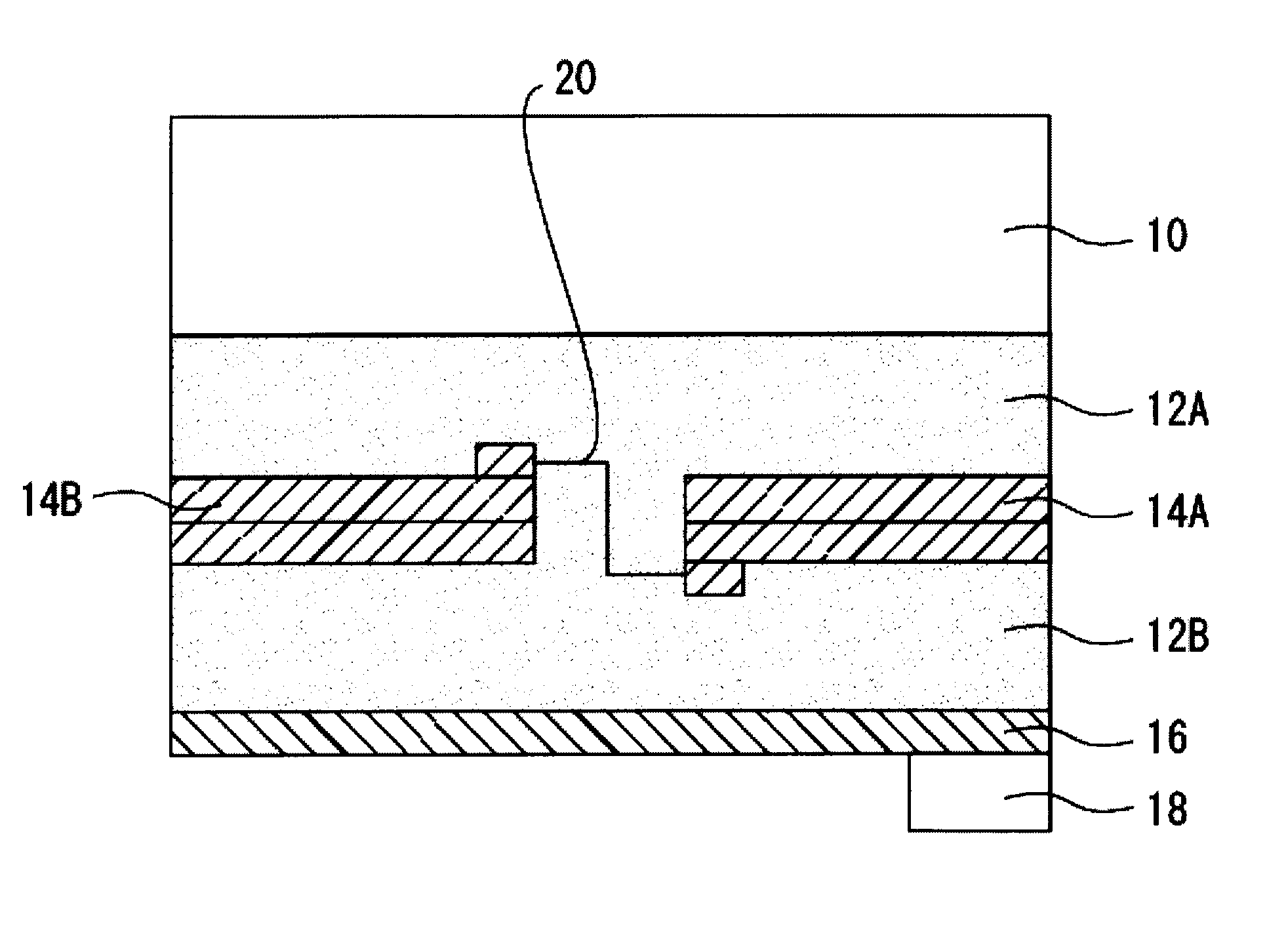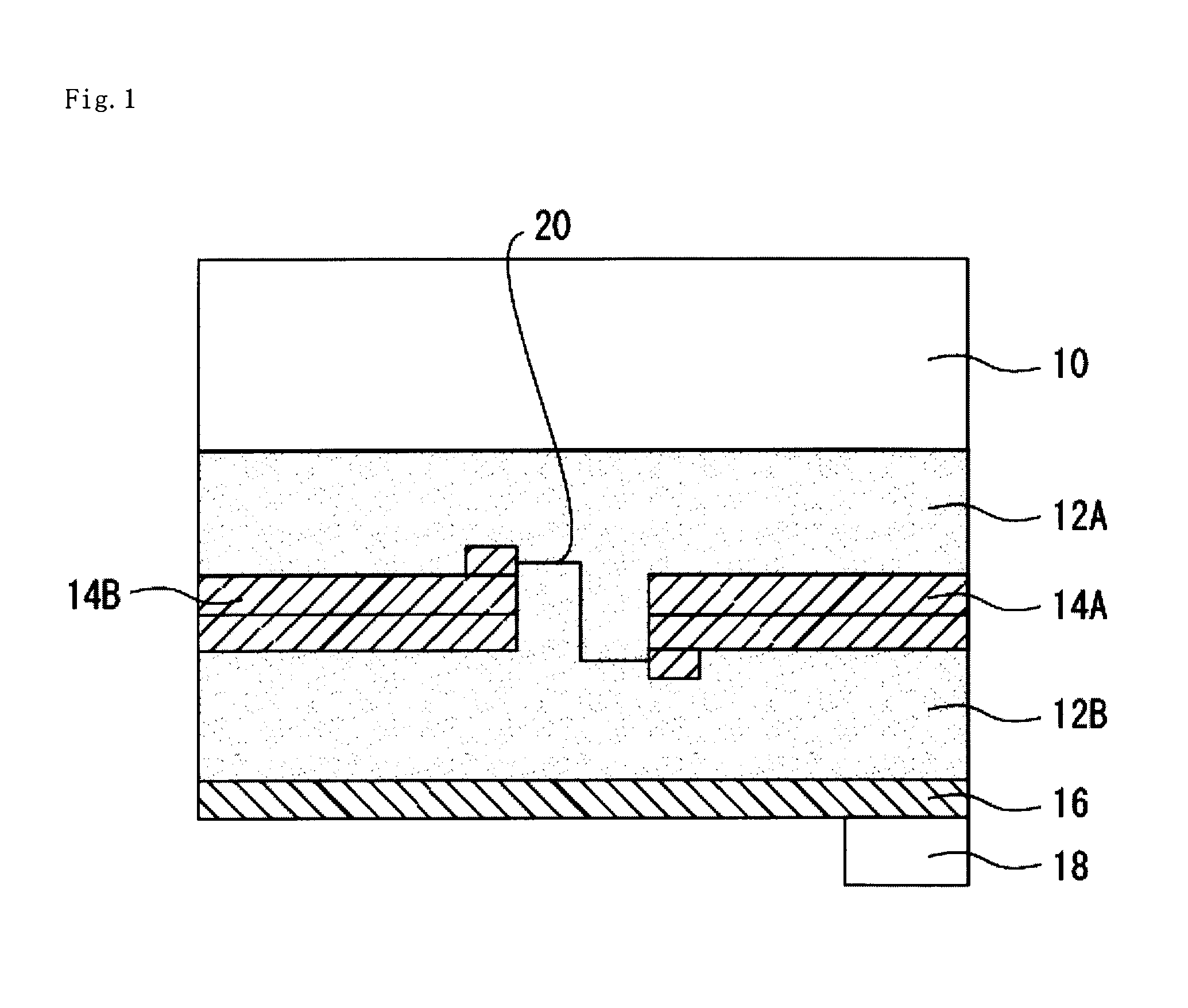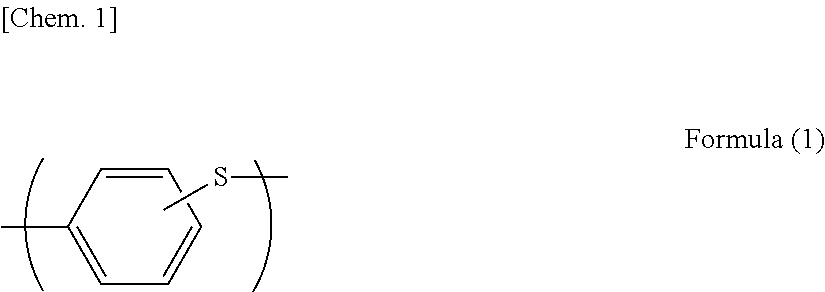Sheet for solar cell, and solar cell module
a solar cell and module technology, applied in the field of sheets for solar cells and solar cell modules, can solve the problems of insufficient adhesiveness of any such film with a encapsulating material resin, poor flame retardancy and durability of sheets, and insufficient durability of films, etc., to achieve excellent flame retardancy, dimensional stability, and excellent durability. , the effect of gas barrier property against water vapor
- Summary
- Abstract
- Description
- Claims
- Application Information
AI Technical Summary
Benefits of technology
Problems solved by technology
Method used
Image
Examples
examples
[0501]Next, the present inventions 1 to 5 are described more specifically by way of examples. However, the present invention is by no means limited by these examples.
[0502]It should be noted that a sheet to be used as a sheet for a solar cell and a sheet to be used as a encapsulating material to be used in each of examples and comparative examples are described below by listing specific examples of the sheets.
[0503][Sheet to be Used as Sheet for Solar Cell]
PPE1
[0504]A resin sheet having a thickness of 50 μm was produced by: extruding a polyphenylene ether-based resin composition (deflection temperature under load; 150° C., polyphenylene ether content: 89 mass %, triphenyl phosphate content: 7 mass, manufactured by SABIC Innovation Plastics, trade name “Noryl N300”) with an extruder having a diameter of 65 mm from a monolayer mouthpiece having a width of 1,150 mm (with its temperature set to 300° C.) while setting a barrel temperature to 240 to 300° C.; cooling the extruded compositi...
example a
[0528]First, the sheets for a solar cell according to the present inventions 1 and 2 are specifically described by way of examples.
example b
[0542]Next, the sheet for a solar cell according to the present invention 3 is specifically described by way of examples.
[0543]Here, a curable adhesive using a polyester-based adhesive “DYNAGRAND IS-063” manufactured by TOYO INK CO., LTD. as a main agent and a polyisocyanate-based curing agent “DYNAGRAND LCR-085” manufactured by TOYO INK CO., LTD. as a curing agent was used for interlayer bonding in the case of a multilayer construction. After 100 mass % of the main agent had been mixed with 12.5 mass % of the curing agent, the mixture was diluted with ethyl acetate, and then the resultant was applied with a bar coater so as to have a thickness of 5 μm after drying.
[0544]First, each of the PPE1, the PET1, the PEN1, the COC1, and the ETFE1 out of the above-mentioned sheets for solar cells was evaluated for its junction box adhesiveness as described below as well as for its heat resistance, durability, and flame retardancy as described above. Table 3 shows the results.
[0545]Junction B...
PUM
| Property | Measurement | Unit |
|---|---|---|
| peel strength | aaaaa | aaaaa |
| oscillation frequency | aaaaa | aaaaa |
| storage modulus | aaaaa | aaaaa |
Abstract
Description
Claims
Application Information
 Login to View More
Login to View More - R&D
- Intellectual Property
- Life Sciences
- Materials
- Tech Scout
- Unparalleled Data Quality
- Higher Quality Content
- 60% Fewer Hallucinations
Browse by: Latest US Patents, China's latest patents, Technical Efficacy Thesaurus, Application Domain, Technology Topic, Popular Technical Reports.
© 2025 PatSnap. All rights reserved.Legal|Privacy policy|Modern Slavery Act Transparency Statement|Sitemap|About US| Contact US: help@patsnap.com



